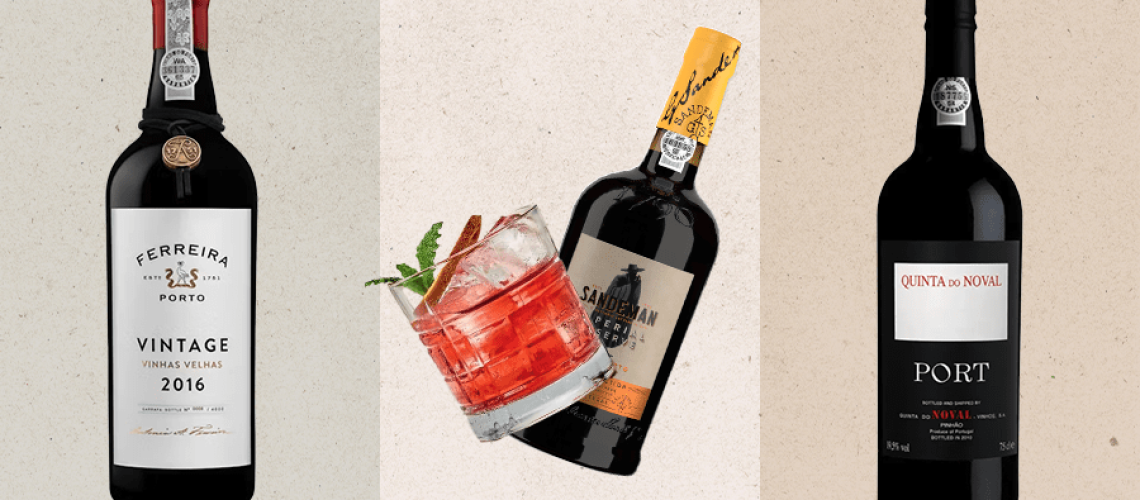If you purchase an independently reviewed product or service through a link on our website, Rolling Stone may receive an affiliate commission.
Port is misunderstood — and that’s unfortunate. Although often pigeonholed into the dessert category, the best modern port wines are complex and sophisticated enough to enjoy with food, mix in cocktails, and sip neat (before or after a meal).
“Port is classified as a dessert wine, but I think it’s a disservice to the category,” says Camila Xavier, Director of Prestige Wines at Evaton (owner of storied port brands Sandeman and Ferreira, as well as other wine labels). “It is a sweet wine, but there is so much more complexity to it, that I think boxing it into ‘dessert wine’ is a little reductive.”
One reason for port’s limited reputation, according to Xavier, could be its less friendly old-school iterations. “Most people who haven’t drank port in a while think it’s gonna be this heavy, clawing drink, and it’s not,” she says. “Port nowadays is so much more refined and elegant — especially if you get a brand like Sandeman that is known for being a little more vibrant. It’s going to have all this acidity and brightness that I don’t think people expect.”
Whether you’re a wine drinker or a whiskey lover, port is a nut worth cracking. Below is a brief guide on how to drink port, including tips from Xavier, cocktail recipes, and some of our favorite brands to try right now.
What Is Port? Definition & Types of Port
Port is a fortified wine that’s made exclusively in Portugal’s Douro region. “Fortified” means it’s made by adding distilled grape spirits (like brandy) to wine. Other fortified wines include sherry, madeira (another Portuguese export), and vermouth.
The three most popular styles of port are ruby, tawny, and white port.
Ruby Port
Sandeman Ruby Port
Ruby is the most common port style and is housed in large tanks (usually stainless steel, sometimes oak vats) after fermentation. This minimizes oxidative aging and yields bright red, fruity results.
White Port
Osborne White Porto
White port is similar to ruby port, only made with white grapes and sometimes fermented longer for a more crisp, light taste.
Tawny Port
Ferreira Port Dona Antonia 20 Year Old Aged Tawny
Tawny ports — characterized by a lighter, golden color — are aged in wood. This allows for oxidization that creates a more nutty flavor, and often more dryness than ruby ports.
How to Serve Port: Glassware, Cocktails, Food Pairings
Many restaurants (especially here in the States) will serve port at room temperature in small glasses. This is all wrong, according to Xavier. “The first thing is to keep your port in the fridge. That will also help it last longer,” she says. “Second, serve it in a regular wine glass. Give it the glass it deserves, so you can swallow and get those aromas going.” The ideal temperature for ruby port, says Xavier, is 57 to 64 degrees Fahrenheit. White port should be served at about 43 to 50 degrees Farenheit.
Tawny port, on the other hand, can be enjoyed more like a whiskey. “It’s a wine that you can pour over ice or drink very chilled and just sip,” says Xavier. Serve tawny ports at 54 to 61 degrees Fahrenheit.
Because port is slightly stronger than wine, it’s also (unbeknownst to some) a cocktail ingredient. One of the most popular cocktails in Portugal (and Xavier’s favorite) is the port tonic, which usually features two ounces of white port, however much tonic you like (I like an equal two ounces), and orange or lemon and mint as garnishes. Another one we love is the Sandeman Spradley which combines an ounce and a half of rye whiskey, an ounce of Sandeman 10-Year Tawny, and chocolate and walnut bitters.
Port can also be served with a meal, in addition to after it. “If you got a ruby port that still has a good amount of tannins — let’s say a vintage Quinta [de Seixo] — that has enough structure to go beautifully with a steak,” says Xavier. Cheese, fruit, and other sweeter foods are even easier to pair with port. “You could also put that wine with a little bit of gorgonzola. The sweetness will play against the cheese. So it’s a perfect pairing that goes beyond dessert.”
Best Port for Beginners
If you’re new to port, certain bottles will be more approachable than others. Xavier recommends going with either a classic ruby or a 10-year tawny to start your journey. “If you’re someone who loves a Cabernet, you start with a reserve ruby. A reserve ruby will have a lot of those red fruits that red wine drinkers like. It will have a lot of the tannins a lot of the development,” she says. “If you’re someone who likes wines that are a little more developed, I would say start with a 10-year-old tawny. That’s a great way to invest in a bottle that is going to have a lot of those caramel aromas that come from aging in the small barrels.”





